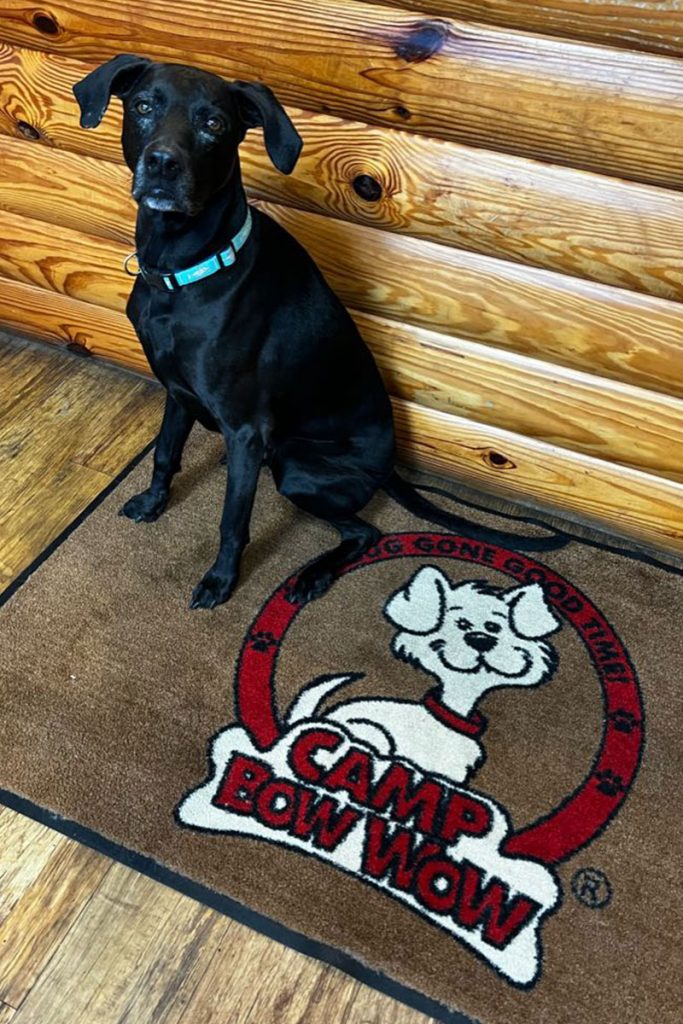Animal House: Pets & Separation Anxiety

Many businesses closed by the pandemic, and workers forced into full or partially remote employment, have returned to normal business hours, and schools re-opened. The exodus of workers and students from home has created separation anxiety for some pets who have grown accustomed to daily company, regular attention, frequent playtime and exercise.
Pets exhibit signs of separation anxiety that range from mild and manageable, to extreme. Fortunately, owners have many resources for help and guidance. There is unlimited online information or books by animal behavior experts. The family veterinarian, who already knows the pet, or a certified animal behaviorist, can provide advice, additional resources and referrals.
There is no governing body to regulate individuals who are or are not qualified to advertise as a “dog behaviorist” or “animal behaviorist”. Therefore, it is best to rely on a veterinarian recommendation, or consult the directories of professional animal behavior organizations to locate a certified behaviorist.
Pet separation anxiety symptoms include: brand new or unusually clingy, anxious behavior, pacing, trembling, barking, howling, whining, drooling, panting, jumping or nipping. House-trained dogs may suddenly have indoor accidents or cats forget where the litter box is located. Outdoors, pets dig, destroy plants, fencing, or attempt escape for the very first time, which could result in serious injury or a lost pet.
Pets who suffer separation anxiety upon their owner’s initial or prolonged departure frequently vent frustration on the home’s interior. They damage doors, windows, floors, walls, carpet, furniture, clothing, shoes or toys. Accidentally swallowing foreign objects can be deadly to pets. Chewing on hard objects can break or crack teeth, injure paws, nails or cause other wounds.
Distressed pets may direct anxiety inward and self-harm by repetitively licking or chewing, pulling fur or nervous scratching that draws blood or opens a wound. Birds may turn needle-sharp beaks or nails on themselves, pick at or pull out feathers or suddenly bite owners. Tame pets such as house rabbits, may hide, become aggressive, nip and bite if they are no longer handled with the same frequency. Cats may be in constant motion, unable to relax or rest. Some pull out fur or groom themselves continuously, according to Erin Katribe, D.V.M., and Best Friends Animal Society Medical Director.
If a pet’s behavior dramatically changes, notice if it appears depressed, lethargic, refuses food, water, favorite treats, toys or activities. If lethargy and refusal of food and water continue into the second day, a trip to the vet is necessary for consultation and a health check. Some medical conditions can mimic separation anxiety behaviors and only a vet can determine the difference.
Animal behavior experts say that, just like children who must adjust to daycare or school for the first time, pets need preparation before they are left home alone for extended hours. Thoughtful pre-planning will ease transition and can avoid anxiety or negative behavior. Pets are closely attuned to human body language, behavior and tone of voice. Owners should remain calm and relaxed when it is time to leave pets for the work day or routine activities.
After a year or longer of togetherness, when normal household schedules may have been greatly modified or abandoned to accommodate home-schooling and other major changes, a daily schedule is needed. To better prepare pets for longer periods of alone time, begin with simple steps. Establish a daily schedule for pet meals, walks and playtimes. Be sure to provide plenty of physical exercise and mental stimulation each day, especially just prior to the extended time alone at home, to expend excess energy.
Schedule routine activities and errands around anticipated work departure and return times to better prepare pets for the expected longer absences, experts recommend. Build consistent interactive playtime into every day, even if for a short duration, to make up for lost time together and to reassure the pet. While some dogs, cats, birds or other pets may easily adjust to longer absences, others will struggle and playtime strengthens the owner-pet bond.
Dog experts and hosts of the CBS show, Lucky Dog, Eric and Rashi Wiese, suggest that pet owners pick up keys or a jacket without actually leaving, to gradually make these ordinary departure signals less stressful. Make a point of stepping outside briefly and within a short time, return inside. Then practice scheduled absences of increasing duration over time. Calmly leave and upon each return do not greet the pet until it is calm and quiet. Reinforce positive behavior with affection and a treat. If the pet continues to react too excitedly upon the return of a family member, teach simple tricks such as a paw shake, sit or lay down, to distract and turn the hyperactivity into a positive interaction.
If a pet becomes anxious or destructive, there are other ways to help ease that anxiety and encourage transition to the new schedule. This is equally important for future situations, including vacations or unexpected trips and other situations where pets cannot always accompany the family.
Many pet parents have discovered that doggy day care provides a solution with many additional benefits, in contrast to leaving the pet home alone during long work day or school hours. Even one or two days per week at a doggy day care, can make a positive difference for many pets who must remain home alone the majority of the time.
Lynda and Jose’ Cadena and their rescue dog, Ziggy, 10 ½, adopted from the Jacksonville Humane Society as a puppy, have used doggy day care since Ziggy was four months old. Lynda has worked at Riverside’s Focus Physical Therapy for 11 ½ years and Jose’ is a twenty-year mortgage underwriter with Chase Bank.
“After our rescue dog Webster, 15, passed away, we looked online at the Humane Society’s adoptable dogs and saw this tiny lab-mix puppy. When we went to adopt Ziggy he was all sharp teeth and energy,” she said. “We started taking him to Camp Bow Wow during work days and it has been nothing but a positive experience for ten years! It’s been a life saver for me as a pet parent and it’s given Ziggy fun and enrichment. I believe he is so friendly, well-rounded and he can just ignore an unfriendly dog because of his experience at the daycare. Instead of a bundle of energy when we get home after a long day at work, he is happy, relaxed, ready for dinner and bed!”
To prevent loneliness and boredom, provide mental stimulation and entertainment during separation, choose special activities or toys pets will learn to enjoy when alone. Reserve these toys just for those extended absences. Pet toys specifically made to hold treats are favorites. The scent, taste and novel presentation of the food or treat is what entices the pet. Experiment with small amounts of low-fat cream or spray cheese, peanut butter, frozen banana, cottage cheese or kibble. Puzzle or treat toys can provide hours of positive entertainment for dogs or cats.

Some pets enjoy a radio tuned to talk shows or music, or the television set to nature or wildlife programs. Many pets appreciate curtains opened wide to allow them to watch outdoor wildlife, or a slightly opened window to hear and smell outdoor scents and sounds.
It could be helpful to hire a dog walker or have a neighbor or friend over to visit or play with a pet during long, daytime absences. Some families have found that the addition of another pet as a companion is a great comfort to their pet during time left home alone. However the lifetime commitment to a second animal must be considered. Also, the new pet may not be accepted by the first pet or vice versa, and issues of jealousy or territorial behavior could compound the separation anxiety problem, instead of solving it.
All pets require a crate, bed or secure spot to retreat to when stressed, for rest and relaxation during the day, at night or when home alone. Never scold or punish pets for separation anxiety behaviors, which are not the result of deliberate disobedience, but are caused by fear, anxiety or stress. Punishment, verbal abuse or other negative reaction to separation anxiety behaviors cause the pet more distress and greatly worsen the condition.
American Veterinary Society of Animal Behavior –
www.avsab.org
Animal Behavior Society –
www.animalbehaviorsociety.org
Certified Applied Animal Behaviorists –
www.corecaab.org
By Julie Kerns Garmendia
Resident Community News







